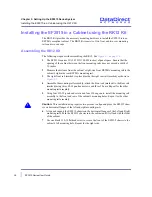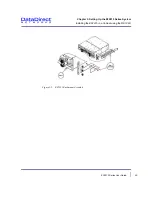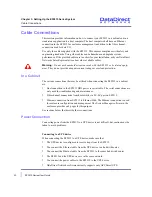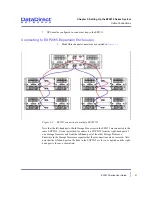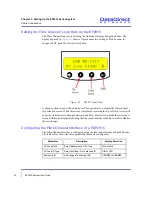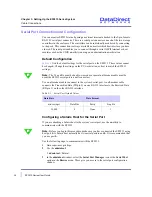
Chapter 2: The EF2915 Series Storage System
Introduction to RAID Technology
EF2915 Series User Guide
19
The characteristics of RAID level 50 are summarized in
Table 2-7
.
RAID Level 6
RAID 6 is essentially an extension of RAID level 5 which allows for additional fault
tolerance by using a second independent distributed parity scheme (dual parity)
Data is striped on a block level across a set of drives, just like in RAID 5, and a second set
of parity is calculated and written across all the drives; RAID 6 provides for an extremely
high data fault tolerance and can sustain multiple simultaneous drive failures
Figure 2-8. RAID 6
Table 2-7. Characteristics of RAID Level 50
Advantages
Disadvantages
Uses
RAID 50 is more fault
tolerant than RAID 5 but
has twice the parity
overhead
High data transfer rates are
achieved thanks to its
RAID 5 array segments
High I/O rates for small
requests are achieved
thanks to its RAID 0
striping
Very expensive to
implement
All disk spindles must
be synchronized,
which limits the
choice of drives
Failure of two drives
in one of the RAID 5
segments renders the
whole array unusable
Maybe a good solution for sites
which would have otherwise gone
with RAID 5 but need some
additional performance boost
























